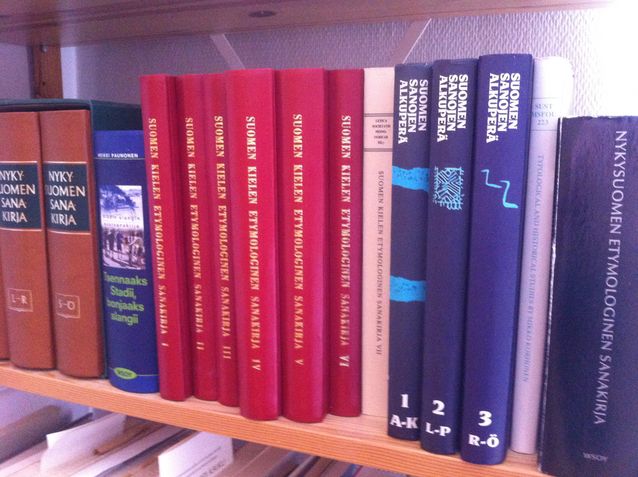Ulla-Maija Forsberg
Ulla-Maija Forsberg (née Kulonen)
Born August 2, 1960, Helsinki.
Bachelor of Arts, 1983, Master of Arts 1984, Licentiate of Philosophy, 1986 and Doctor of Philosophy, 1989 (Finno-Ugrian Languages), University of Helsinki
Professor of Finno-Ugrian Languages, University of Helsinki, 1998-
Vice-rector, University of Helsinki, 2010–13
Dean, Faculty of Arts, University of Helsinki, 2007–09
Researcher / Special Investigator, Institute for the Languages of Finland (KOTUS) 1989–98
Research Assistant, Academy of Finland, 1984–89
Publications, research projects and other academic activity
Research interests: historical and comparative linguistics, etymology, terminology research, lexicography, syntax, Ob-Ugrian languages, Hungarian
Most significant publications (monographs and dictionaries)
The Passive in Ob-Ugrian (PhD thesis, 1989)
Suomen sanojen alkuperä; etymologinen sanakirja 1–3 (‘Etymology of Finnish words’ vols I-III, 1992/1995/2000, Principal Editor)
Johdatus unkarin kielen historiaan (’Introduction to the history of Hungarian’, 1993)
Johdatus saamentutkimukseen (’Introduction to Saami Research’, ed. with Juha Pentikäinen and Irja Seurujärvi-Kari, 1994)
Sanojen alkuperä ja sen selittäminen. Etymologista leksikografiaa (‘The origin of words. Etymological lexicography’, 1996)
The Saami: a Cultural Encyclopaedia (ed. with Risto Pulkkinen & Irja Seurujärvi-Kari 2005)
Itämansin kielioppi ja tekstejä (’Grammar of Eastern Mansi and texts’, 2007)
Fonesteemit ja sananmuodostus (’Phonesthemes and word formation’, 2010)
Suomi-unkari -sanakirja (‘Finnish-Hungarian dictionary’, Principal Editor with Magdolna Kovács, forthcoming 2015)
Awards and special achievements
State Award for Public Information, 2006
Knight (First Class), Order of the White Rose of Finland, 2009
Swedish Assembly of Finland Award, 2013
Photo: Ari Aalto
Written by Ulla-Maija Forsberg (Riitta-Ilona Hurmerinta, ed.)
Translated by John Calton

